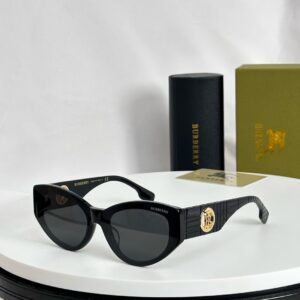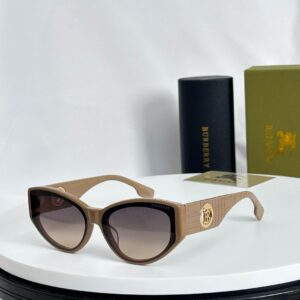The Evolution of Sunglasses in Fashion
Sunglasses have a rich history that traces back centuries, evolving from a mere practical item for eye protection to a prominent symbol of style, luxury, and status. Initially developed to shield the eyes from harsh sunlight, early iterations of sunglasses were often made from simple materials such as tinted quartz or leather. These rudimentary designs primarily served the practical purpose of preventing glare, particularly for those in bright environments.
The turning point in the evolution of sunglasses came in the early 20th century, when sunglasses became increasingly popular among celebrities and the elite. As Hollywood emerged as a cultural powerhouse, stars like Greta Garbo and Clark Gable helped popularize sunglasses, linking them with glamour and sophistication. This burgeoning association with the entertainment industry propelled sunglasses into mainstream fashion, marking their transition from functional items to coveted fashion accessories. Designers began to experiment with shapes and colors, leading to a diverse range of styles that reflected the aesthetics of their time.
The 1950s and 1960s witnessed a significant transformation as bold designs gained popularity. Iconic styles, such as oversized frames and cat-eye shapes, reflected the cultural shifts of the era. During this period, sunglasses became a staple in the wardrobes of trendsetters and influencers, further solidifying their status as essential fashion accessories. By the 1980s, sunglasses had become synonymous with high fashion, as luxury brands introduced exquisite designs that catered to the rapidly growing affluent market.
As the 21st century progressed, the influence of social media and fast fashion trends further revitalized the sunglasses industry. Today, a myriad of styles, from retro designs to innovative modern frames, reflect the diverse tastes of contemporary fashion. The journey of sunglasses in the fashion landscape underscores their significance not only as protective eyewear but also as powerful symbols of identity and self-expression.
Cultural Icons and Sunglasses
Sunglasses have evolved beyond a mere functional accessory to become a powerful cultural symbol, largely influenced by iconic figures in music, film, and sports. These cultural icons have wielded considerable influence over public perceptions of sunglasses, establishing particular styles and brands as synonymous with their personal images. For instance, musicians like John Lennon popularized oversized, round frames that encapsulated the spirit of the 1960s counterculture. His iconic eyewear not only defined a fashion trend but also contributed to the larger narrative of individuality and self-expression, which resonated with fans around the globe.
Similarly, Hollywood stars have historically played a pivotal role in shaping the sunglasses market. Audrey Hepburn, through her memorable role in “Breakfast at Tiffany’s,” showcased the timeless appeal of cat-eye sunglasses, prompting a resurgence of interest in vintage styles. The allure of her character and her effortless elegance turned these sunglasses into a fashion staple, influencing many future generations of eyewear choices. This illustrates how a simple accessory can transcend its practical use, becoming intertwined with the persona of a celebrity, thus driving consumer desire.
Sports figures also contribute significantly to this cultural phenomenon. For example, cycling champion Lance Armstrong was known for his signature sporty shades that became emblematic of athletic achievement and vibrant outdoor lifestyles. His association with high-performance eyewear brought attention to the practicality of sunglasses, showcasing how they can be both fashionable and functional in various contexts. Furthermore, these sunglasses evolved into a symbol of aspiration and achievement, as fans sought to emulate their heroes.
Through these case studies, it’s evident that the relationship between celebrities and sunglasses significantly shapes trends in fashion, contributing to the accessory’s status as a cultural touchstone. The attachment to specific shapes and brands reveals deeper aspects of identity, aspiration, and style within contemporary culture.
The Rise of Replicas: Trend or Threat?
The emergence of replica sunglasses has sparked a dynamic conversation within the fashion industry, prompting dialogue about authenticity versus imitation. As brands strive to cultivate a distinct identity, the proliferation of replica products often blurs these lines, raising questions about consumer preferences and brand integrity. Replica sunglasses are not merely imitations of coveted styles; they also represent a broader cultural phenomenon that reflects changing attitudes towards consumption and aesthetics.
Consumer attitudes toward replicas are influenced significantly by social media and the fast fashion industry. Platforms such as Instagram and TikTok facilitate rapid trends and the spread of styles, making luxury and high-end pieces more visible and desirable. This visibility often leads to a burgeoning curiosity for replicas, which offer styles at a fraction of the cost. For many, the allure of enjoying high-fashion looks without the hefty price tag translates into a moral quandary. Some consumers view the purchase of replica sunglasses as a celebration of style accessibility, while others see it as a compromise of brand authenticity.
Accessibility is often lauded as one of the prime virtues of replica sunglasses. By enabling a broader demographic to partake in fashionable aesthetics, these products challenge the elitism traditionally associated with luxury brands. However, this accessibility raises concerns regarding brand exclusivity. Established fashion houses invest heavily in their brand identity; thus, replicas might undermine such efforts by diluting the market with cheaper alternatives. Ultimately, the rise of replica sunglasses poses both opportunities and challenges. While they democratize fashion to an extent, they also compel brands to grapple with maintaining exclusivity amidst a landscape that increasingly embraces imitation over authenticity.
Sustainable Fashion and the Future of Sunglasses
The concept of sustainable fashion has gained momentum in recent years as a response to increasing environmental concerns. The future of sunglasses within this context looks promising, as more manufacturers are emphasizing eco-friendly materials and processes. The eyewear industry is beginning to shift towards using recycled plastics, biodegradable materials, and responsible sourcing practices, effectively aligning with the broader goals of sustainability. This transformation is essential, given that traditional production methods often contribute significantly to waste and pollution.
One prominent trend in sustainable sunglasses is the use of recycled materials. Brands are now crafting frames and lenses from plastics retrieved from oceans or industrial waste, reducing the reliance on virgin materials. This not only helps mitigate environmental damage but also raises awareness about the importance of recycling. The incorporation of innovative materials like bamboo or biodegradable acetate further exemplifies the industry’s commitment to sustainability. Such choices not only fulfill ecological objectives but also provide unique aesthetic qualities that appeal to environmentally-conscious consumers.
However, the introduction of replicas in the sustainability conversation presents both challenges and opportunities. On one hand, replicas can perpetuate the fast fashion cycle, promoting overconsumption and potentially hindering genuine sustainability efforts. On the other hand, if produced through eco-conscious methods, replicas could serve as an accessible alternative to high-end designer pieces, broadening the appeal of sustainable fashion. This may lead consumers to make more environmentally friendly choices when purchasing eyewear.
Ultimately, the future of sunglasses will likely intertwine with the principles of sustainable fashion, balancing aesthetics with responsibility. As the industry evolves, the importance of accountability and transparent practices will pave the way for a new era of fashion where sustainability is paramount, offering a renewed perspective on how consumers engage with their eyewear choices.




